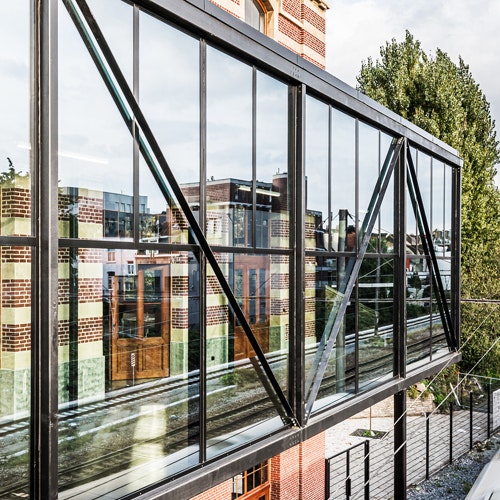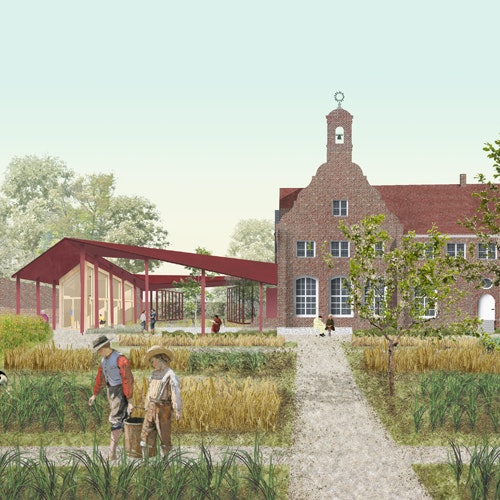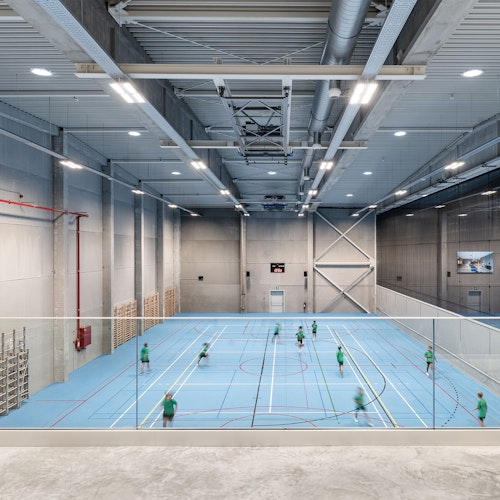Emmaus Campus
Public buildings
Design & Build proposal for a contemporary religious campus on the outskirts of Bruges.
The Emmaus parish brings together five former parishes located in the Bruges boroughs of Sint-Andries and Sint-Michiels. Following a thorough assessment of its existing patrimony, the church opted to consolidate its activities into one centrally located, compact new-build campus, rather than maintaining and renovating the five existing parish churches. In addition to a new parish church, the Emmaus Campus will comprise a reception area, a cafeteria, meeting rooms, a caretaker’s residence, and a parish office.
The site of the future campus is currently occupied by a farmhouse with three wings, symmetrically arranged in an inviting U-shape. Our proposal introduces a new building volume that aligns with both the logic of the existing farmstead and the suburban context: a low-profile structure topped with a series of parallel gabled roofs. This new building connects respectfully to the preserved wings of the original farmstead. The rhythm of the parallel roofs creates generous interior heights and a dynamic sense of spatiality.
The composition of the two retained wings and the recessed new volume forms an inviting entrance square — a contemporary interpretation of the archetypal forecourt found in early Christian church architecture.
Inside the main church space, the effect of the sloping roofs is most clearly felt. The angles and folds of the roof structure contribute positively to the acoustics. A fully retractable wall between the large and small church spaces allows for spatial flexibility. High-level windows bring in ample natural light, while lower windows offer views of the surrounding garden.
A walking path encircles the campus, encouraging moments of rest and reflection in relation to the surrounding landscape and the cooling presence of the trees. The garden is envisioned as an extension of the spiritual space — a setting where outdoor services can take place. It is designed as an oasis of stillness and contemplation, freely accessible to all.
Throughout, the architecture embraces silence — offering a space for reflection, calm, and inner peace, both indoors and out.













